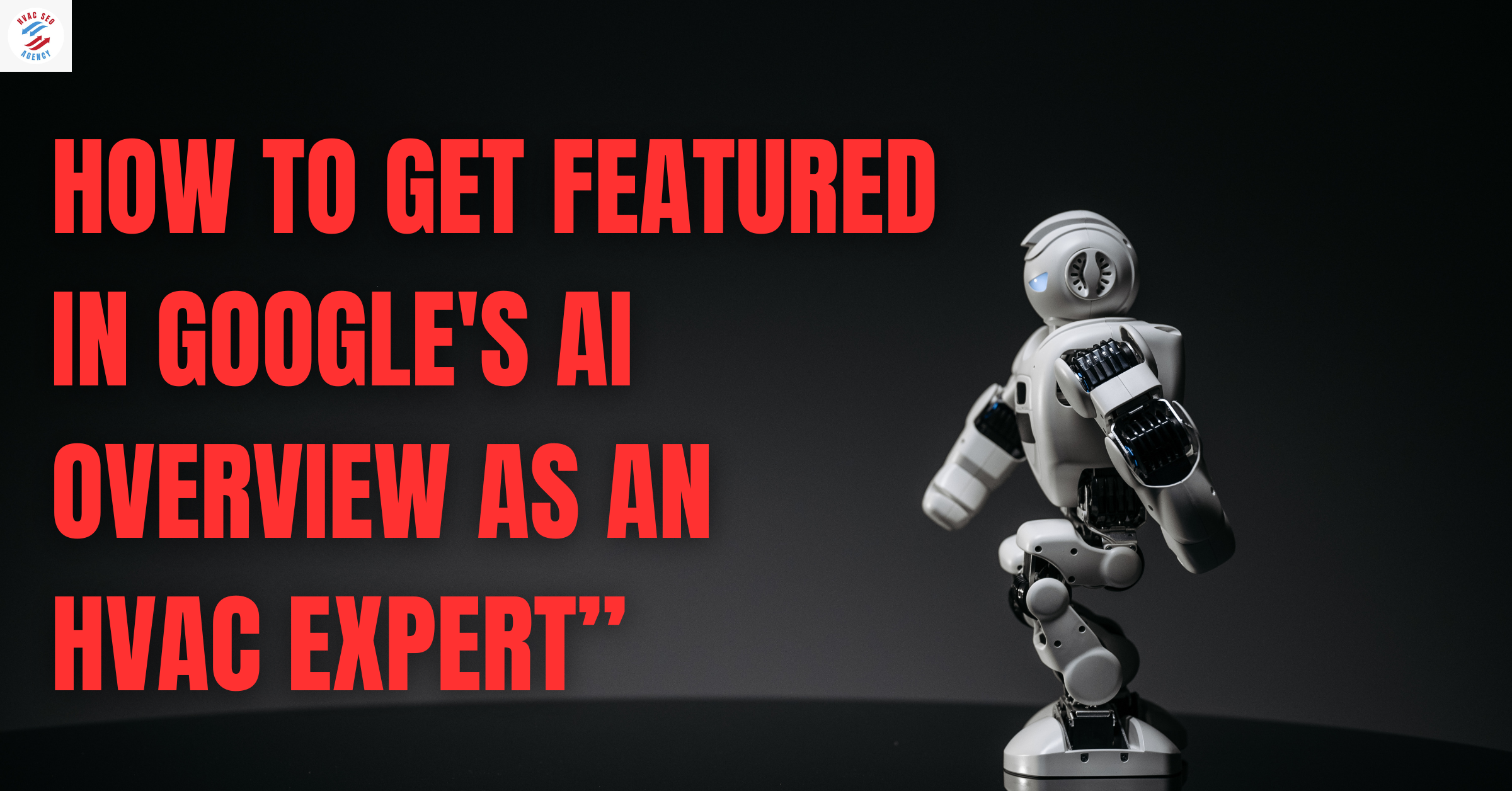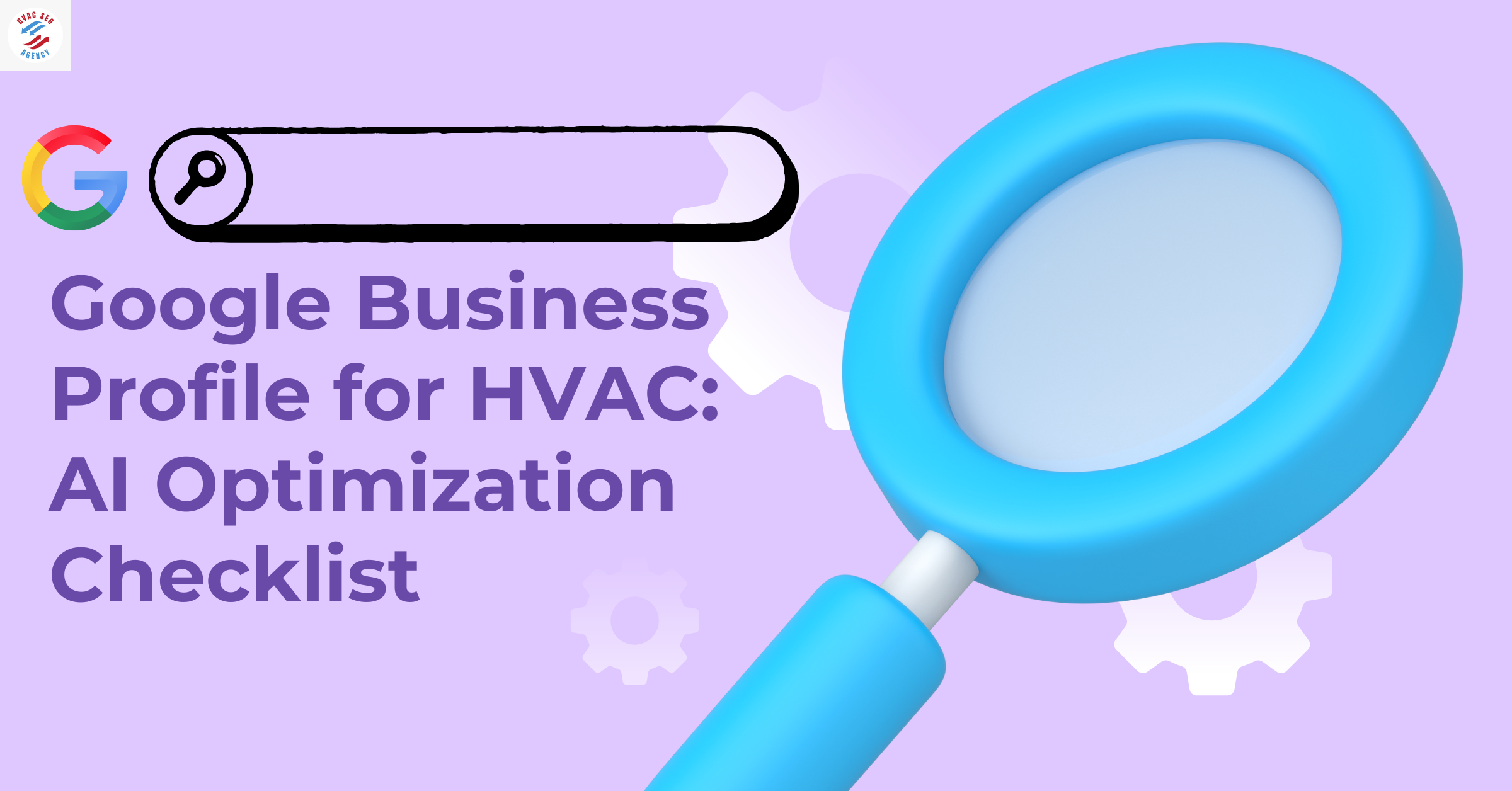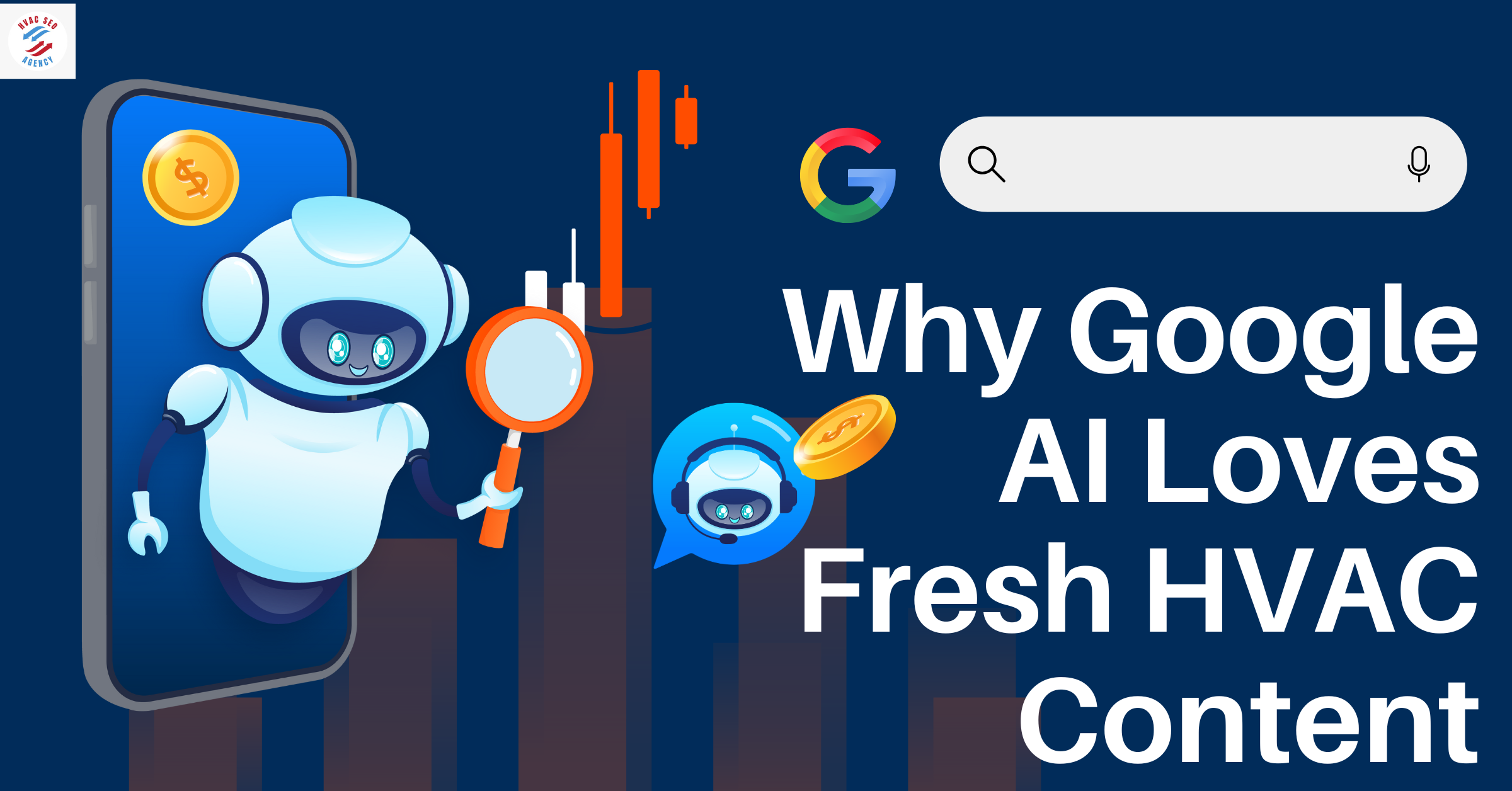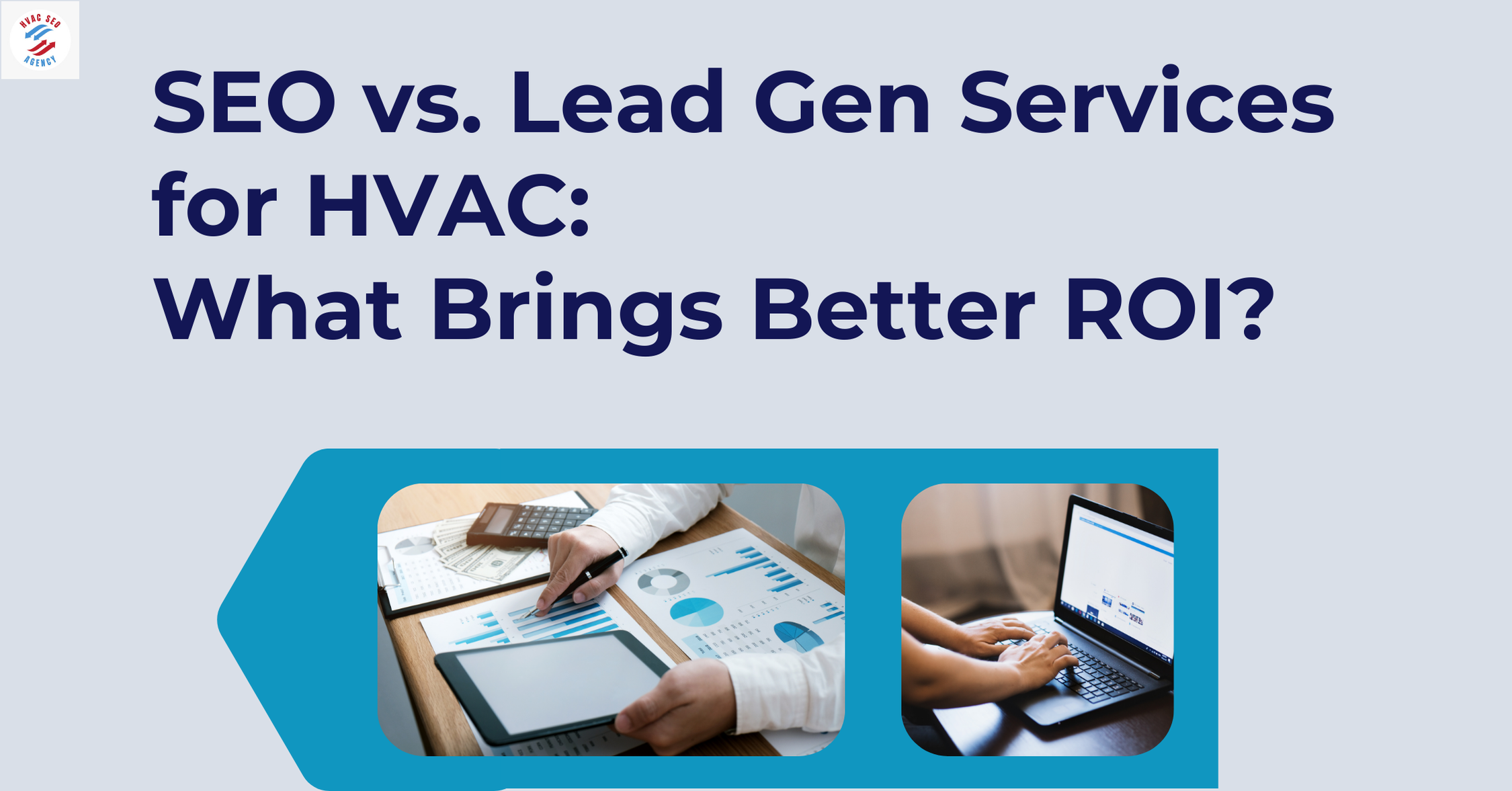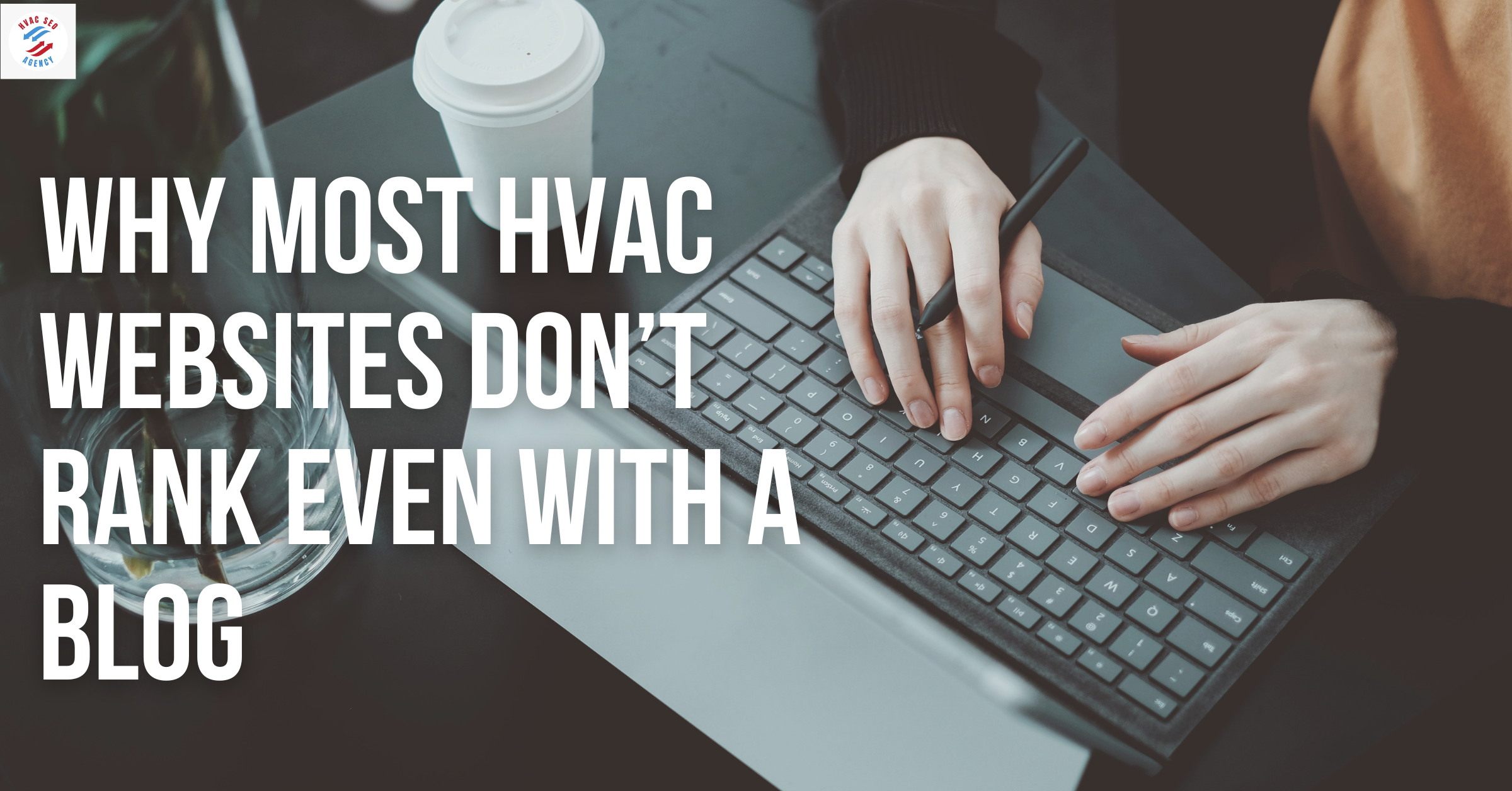The Importance of Follow-Ups After an HVAC Service Call

Section 1:Why Follow-Ups Matter After Every HVAC Service Call
In the competitive HVAC industry, maintaining strong customer relationships is vital for sustained success. One of the most effective strategies to achieve this is through diligent HVAC customer follow-up. By proactively engaging with clients after service calls, HVAC businesses can significantly improve HVAC retention, leading to increased customer loyalty and revenue growth. Companies that pair these efforts with targeted HVAC SEO services see even greater results, as optimized online visibility ensures that follow-up efforts are supported by a steady flow of qualified leads and local recognition.
The Role of Customer Follow-Ups in HVAC Services
Customer follow-ups involve reaching out to clients after a service visit to ensure satisfaction, address any concerns, and offer additional support or services. This practice not only demonstrates a commitment to quality service but also fosters trust and reliability between the HVAC company and its clients.
Importance of Customer Retention in the HVAC Industry
Retaining existing customers is more cost-effective than acquiring new ones. According to industry data, contracting companies add on 75%-80% of their new business during the summer and winter seasons, with a significant portion coming between May and August. This seasonal influx underscores the importance of maintaining a loyal customer base to ensure steady revenue during off-peak periods.
Impact of Follow-Ups on Customer Satisfaction and Loyalty
Effective follow-up strategies can lead to higher customer satisfaction and loyalty. For instance, consumers are seven times more likely to set an appointment with a contractor who reaches out within the first hour after a lead is generated. Moreover, this prompt response makes the contractor 21 times more likely to close the deal.
By implementing structured follow-up procedures, HVAC companies can address any issues promptly, gather valuable feedback, and reinforce their commitment to customer care. This proactive approach not only enhances the customer experience but also positions the company as attentive and responsive key factors in building long-term client relationships.
Partnering with an affordable HVAC SEO agency in Dallas can further amplify these results. By ensuring your business ranks high in local searches, such an agency drives consistent lead flow that aligns perfectly with your follow-up strategies. The combination of effective follow-ups and expert SEO creates a powerful system for customer acquisition and long-term retention.
In the following sections, we will delve deeper into the benefits of HVAC customer follow-ups, explore effective strategies, and examine how these practices contribute to improving HVAC retention and overall business growth.
Section 2: The Impact of Follow-Ups on Customer Retention in the HVAC IndustryCI Web Group Digital Marketing Agency
In the HVAC industry, customer retention is a critical factor for sustaining and growing a business. Implementing effective HVAC customer follow-up strategies can significantly improve HVAC retention rates. This section delves into the impact of follow-ups on customer retention, supported by relevant statistics, tables, and graphs.
Understanding Customer Retention in HVAC
Customer retention refers to the ability of a company to retain its customers over a period. In the HVAC sector, retaining customers is essential due to the competitive nature of the market and the high cost associated with acquiring new clients. Regular follow-ups after service calls can enhance customer satisfaction, leading to increased loyalty and repeat business.
The Role of Follow-Ups in Enhancing Customer Satisfaction
Effective HVAC customer follow-up practices demonstrate a company's genuine commitment to long-term customer care. By reaching out after a service call, HVAC businesses can immediately address concerns, verify that services met expectations, and offer additional information or seasonal advice. This kind of proactive engagement helps resolve issues before they escalate and reinforces trust in the company’s reliability and responsiveness.
Moreover, follow-up interactions present an excellent opportunity to share Marketing Tips to Attract More Customers During Off-Seasons. By informing customers about preventive maintenance, energy-saving upgrades, or limited-time promotions, HVAC companies not only add value to the customer experience but also improve HVAC retention by staying top-of-mind year-round.
Statistical Insights into Follow-Ups and Retention
Several studies highlight the positive correlation between follow-up practices and customer retention in the HVAC industry:
Response Rates to Follow-Up Campaigns: According to a study analyzing HVAC estimate follow-up campaigns, the best-performing campaigns achieved a response rate of 90.06%, while the worst had 17.82%, with an average response rate of 60%.
Impact of Prompt Follow-Ups: Research indicates that consumers are seven times more likely to set an appointment with a contractor who reaches out within the first hour after a lead is generated, making the contractor 21 times more likely to close the deal.
Customer Loss Due to Perceived Indifference: Industry data shows that HVAC contractors lose about 11% of their customer base annually, with 7% leaving because they felt the company didn’t care or respond promptly to their needs.
Table: Response Rates of HVAC Follow-Up Campaigns
Graph: Correlation Between Follow-Up Timing and Appointment Setting
To maximize the benefits of follow-ups, HVAC companies should consider the following practices:
Timeliness: Contact customers promptly after service calls to address any immediate concerns.
Personalization: Tailor follow-up communications to the specific services provided and the customer's history.
Multiple Channels: Utilize various communication channels such as phone calls, emails, and text messages to reach customers effectively.
Feedback Solicitation: Encourage customers to provide feedback on the service received to identify areas for improvement.
Consistent Scheduling: Implement a structured schedule for follow-ups to ensure no customer is overlooked.
Section 3: Best Practices for Effective HVAC Customer Follow-Ups
Implementing effective HVAC customer follow-up strategies is crucial for enhancing customer satisfaction and loyalty. By adopting best practices in follow-up procedures, HVAC companies can significantly improve HVAC retention rates, leading to sustained business growth. This section outlines key strategies and supports them with relevant statistics and data.
1. Timeliness of Follow-Ups
Prompt follow-ups demonstrate a company's commitment to customer care and can greatly influence customer decisions. Studies show that consumers are seven times more likely to set an appointment with a contractor who reaches out within the first hour after a lead is generated. Moreover, this prompt response makes the contractor 21 times more likely to close the deal.
Table 1: Impact of Follow-Up Timing on Customer Engagement
Tailoring follow-up messages to address specific customer needs and preferences can enhance engagement. Personalized communications show customers that the company values their individual requirements, fostering a stronger connection and increasing the likelihood of repeat business.
3. Utilizing Multiple Communication Channels
Employing various communication channels such as phone calls, emails, and text messages ensures that follow-up efforts reach customers through their preferred mediums. This multi-channel approach increases the chances of successful engagement and demonstrates flexibility in customer service.
4. Consistent and Structured Follow-Up Schedule
Establishing a consistent follow-up schedule helps in maintaining regular contact with customers without being intrusive. For instance, sending a follow-up message immediately after service, another after a week, and subsequent messages at regular intervals can keep the company top-of-mind for customers.
5. Soliciting and Acting on Customer Feedback
Actively seeking customer feedback after each service call shows that the company values its clients’ opinions and is dedicated to continuous improvement. By implementing changes based on real customer experiences, HVAC companies can enhance service quality and increase customer satisfaction. One effective way to streamline this process is to Choose the Right HVAC Software for Your Business, which can automate feedback collection, track customer sentiment, and generate actionable insights. This not only improves operational efficiency but also strengthens customer loyalty and retention.
6. Offering Value-Added Services
Providing additional services such as maintenance agreements, loyalty programs, or educational content on HVAC system upkeep can enhance customer loyalty. These value-added services demonstrate a commitment to the customer's long-term satisfaction and can differentiate the company from competitors.
Table 2: Benefits of Value-Added Services in HVAC Customer Retention
Utilizing Customer Relationship Management (CRM) systems and automation tools can streamline follow-up processes. Automation ensures timely and consistent communication, reducing the likelihood of human error and freeing up staff to focus on other critical tasks.
8. Training Staff on Customer Engagement
Regular training programs for staff on effective communication and customer engagement techniques can enhance the quality of follow-ups. Well-trained staff are better equipped to handle customer inquiries, address concerns, and build lasting relationships.
Section 4: Leveraging HVAC SEO Agencies for Enhanced Business Growth
In today's digital age, establishing a robust online presence is crucial for HVAC companies aiming to generate leads and increase revenue. Collaborating with specialized HVAC SEO agencies can significantly enhance a company's visibility in search engine results, leading to substantial business growth. This section explores the role of HVAC SEO agencies and their impact on lead generation and revenue enhancement.
The Role of HVAC SEO Agencies
HVAC SEO agencies specialize in optimizing HVAC companies' online platforms to rank higher in search engine results. By employing strategies such as keyword optimization, content creation, and website enhancements, these agencies ensure that HVAC businesses appear prominently when potential customers search for related services. This increased visibility translates into higher website traffic and, consequently, more leads.
Impact on Lead Generation
Effective SEO strategies directly influence lead generation for HVAC companies. By improving search engine rankings, businesses become more accessible to potential clients actively seeking HVAC services. For instance, companies that have implemented robust SEO practices have experienced significant growth in their lead generation efforts.
Revenue Growth through SEO
The correlation between enhanced online visibility and revenue growth is well-documented. By attracting more qualified leads through improved search rankings, HVAC companies can increase their customer base and, subsequently, their revenue. Studies have shown that a significant percentage of HVAC contractors consider SEO and content marketing as their top sources for high-quality leads.
Case Studies Highlighting SEO Success
Several HVAC companies have witnessed remarkable improvements in their business metrics after partnering with SEO agencies. For example, an HVAC company reported a substantial increase in website traffic and lead generation within a short period of implementing targeted SEO strategies.
Choosing the Right HVAC SEO Agency
Selecting an appropriate SEO agency is critical for achieving desired outcomes. Companies should consider factors such as the agency's experience in the HVAC industry, proven track record, and the ability to tailor strategies to specific business needs. Collaborating with an agency that comprehends the unique challenges and opportunities within the HVAC sector can lead to more effective and sustainable results.
Section 5: Integrating Technology to Streamline HVAC Customer Follow-Ups
In the modern HVAC industry, leveraging technology is essential for optimizing customer follow-up processes. Implementing advanced tools and systems enhances efficiency, improves customer satisfaction, and significantly contributes to business growth. This section explores various technological solutions that can streamline HVAC customer follow-ups, supported by relevant statistics and data.
1. Customer Relationship Management (CRM) Systems
CRM systems are pivotal in managing and analyzing customer interactions throughout the service lifecycle. They enable HVAC companies to store detailed customer information, track service histories, and schedule follow-ups effectively. By utilizing CRM systems, businesses can ensure timely and personalized communication, fostering stronger customer relationships. In addition, many CRM platforms offer built-in tools to Collect More Reviews for Your HVAC Business, making it easier to request, track, and showcase customer feedback—further enhancing online reputation and trust.
Benefits of CRM Systems:
Centralized Data Management: All customer information is stored in a single, accessible location, facilitating efficient follow-up scheduling and execution.
Automated Reminders: CRMs can send automated reminders for maintenance appointments or service check-ins, ensuring consistent engagement.
Enhanced Customer Insights: Detailed records allow for personalized follow-ups based on individual customer preferences and service history.
2. Automated Communication Tools
Automation in communication streamlines the follow-up process, ensuring customers receive timely and relevant messages without manual intervention. Tools such as automated emails, text messages, and voice calls can be scheduled to maintain regular contact with clients.
Impact of Automated Communication:
Increased Efficiency: Reduces the time and effort required for manual follow-ups, allowing staff to focus on more complex tasks.
Consistency: Ensures that no customer is overlooked, maintaining a uniform follow-up process.
Improved Response Rates: Automated messages can be optimized for higher engagement, leading to better customer retention.
Table 1: Comparison of Response Rates in Automated Follow-Up Campaigns
AI-powered chatbots and virtual assistants can handle initial customer inquiries and routine follow-ups, providing immediate responses and support. These tools enhance customer experience by offering 24/7 availability and quick resolutions to common issues.
Advantages of AI in Customer Follow-Ups:
Scalability: Handles multiple customer interactions simultaneously, accommodating business growth without additional staffing.
Personalization: AI can analyze customer data to deliver tailored messages and recommendations.
Cost-Effectiveness: Reduces the need for extensive human resources dedicated to routine follow-ups.
4. Mobile Applications
Developing a dedicated mobile app allows HVAC companies to engage with customers directly through their smartphones. Features can include appointment scheduling, service reminders, and feedback submission, enhancing convenience for clients.
Benefits of Mobile Apps:
Direct Communication: Push notifications can be used for real-time updates and reminders.
Enhanced User Experience: Provides a platform for customers to easily access services and information.
Brand Loyalty: A well-designed app can increase customer engagement and loyalty.
5. Integration with Internet of Things (IoT)
IoT technology enables HVAC systems to communicate performance data in real-time. Integrating IoT with customer follow-up processes allows for proactive maintenance and timely interventions, enhancing service quality.
Impact of IoT Integration:
Proactive Service: Identifies potential issues before they escalate, allowing for timely maintenance.
Data-Driven Insights: Provides valuable data on system performance and customer usage patterns.
Enhanced Customer Trust: Demonstrates a commitment to maintaining optimal system performance and customer satisfaction.
Graph : Impact of Technological Integration on Customer Retention Rates
Section 6: Case Studies: Successful HVAC Customer Follow-Up Strategies
Implementing effective HVAC customer follow-up strategies is essential for enhancing customer satisfaction and loyalty. This section presents real-world case studies that demonstrate how diligent follow-up practices can significantly improve HVAC retention rates and drive business growth.
Case Study 1: Enhancing Customer Satisfaction through Proactive Communication
Background: A commercial building owner experienced frequent HVAC system downtimes and high repair costs due to inadequate maintenance practices. These issues disrupted operations and affected tenant satisfaction.
Strategy Implemented: The HVAC service provider introduced a comprehensive follow-up protocol, including regular maintenance reminders and post-service check-ins. They also implemented a system for promptly addressing customer feedback and concerns.
Outcome: The proactive follow-up approach led to improved system reliability and reduced unexpected downtimes. Tenant satisfaction increased, and the building owner reported a significant decrease in repair costs. This case underscores the importance of consistent follow-up in maintaining system performance and customer contentment.
Case Study 2: Leveraging Technology for Efficient Follow-Ups
Background: BTU Group, a UK-based HVAC services company, relied on paper-driven workflows, leading to inefficiencies in managing customer interactions and follow-ups.
Strategy Implemented: The company transitioned to an electronic system, utilizing MSI’s Service Pro software to automate follow-ups, schedule maintenance, and maintain detailed customer records.
Outcome: The adoption of technology streamlined their follow-up processes, improved engineer productivity, and enhanced customer satisfaction. The company reported better service consistency and increased capacity to take on more clients.
Case Study 3: Personalized Follow-Ups to Boost Customer Loyalty
Background: An HVAC contractor observed a decline in repeat business and identified that customers felt undervalued post-service.
Strategy Implemented: The contractor implemented personalized follow-up communications, including thank-you notes, service satisfaction surveys, and tailored maintenance tips based on individual customer systems.
Outcome: Customers appreciated the personalized attention, leading to increased loyalty and a higher rate of repeat business. The contractor also received positive online reviews, enhancing their reputation and attracting new clients.
Case Study 4: Timely Follow-Ups to Secure Sales
Background: An HVAC company faced challenges in converting leads into sales, with potential customers often not responding after initial estimates were provided.
Strategy Implemented: The company analyzed their follow-up campaigns and found that promptness and message content significantly impacted response rates. They optimized their follow-up timing and tailored messages to address customer concerns effectively.
Outcome: The best-performing follow-up campaigns achieved response rates as high as 90.06%, demonstrating that timely and well-crafted follow-ups can substantially increase customer engagement and conversion rates.
Case Study 5: Building Long-Term Relationships through Consistent Follow-UpsTimmermann Group
Background: An HVAC contractor noticed an annual loss of approximately 11% of their customer base, with 7% leaving due to perceived indifference.
Strategy Implemented: The contractor established a structured follow-up schedule, including regular check-ins, maintenance reminders, and exclusive offers for existing customers.
Outcome: This consistent engagement demonstrated care and appreciation, leading to improved customer retention and a reduction in the annual customer loss rate.
Section 7: Measuring the Success of HVAC Customer Follow-Up Strategies
Implementing effective HVAC customer follow-up strategies is essential for enhancing customer satisfaction and loyalty. However, to ensure these strategies are yielding the desired outcomes, it is crucial to measure their success accurately. This section explores key performance indicators (KPIs) and methods for assessing the effectiveness of follow-up initiatives, supported by relevant statistics and data.
1. Customer Retention Rate
Definition: The percentage of customers who continue to engage with HVAC services over a specific period.
Importance: A higher retention rate indicates that follow-up strategies are effectively fostering customer loyalty.
Industry Benchmark: The average customer retention rate across various industries is approximately 72.5%.
2. Response Rate to Follow-Up Communications
Definition: The proportion of customers who respond to follow-up messages, such as emails or calls, after a service.
Significance: High response rates suggest that follow-up communications are engaging and relevant to customers.
Data Insight: Analysis of HVAC estimated follow-up campaigns revealed an average response rate of 60%, with top-performing campaigns achieving up to 90.06%.
3. Customer Satisfaction Score (CSAT)
Definition: A metric that gauges customer satisfaction with a specific service or interaction, typically measured through post-service surveys.
Application: Regularly collecting CSAT scores post-follow-up can provide insights into the immediate impact of follow-up communications on customer perceptions.
4. Net Promoter Score (NPS)
Definition: Measures the likelihood of customers recommending the HVAC service to others, indicating overall satisfaction and loyalty.
Relevance: A high NPS reflects positively on follow-up strategies, suggesting they contribute to strong customer relationships.
5. Repeat Service Rate
Definition: The percentage of customers who return for additional services within a set timeframe.
Insight: An increasing repeat service rate implies that follow-up efforts are successfully encouraging ongoing customer engagement.
6. Online Reviews and Ratings
Definition: The quantity and quality of customer reviews on platforms like Google, Yelp, and industry-specific sites.
Impact: Positive reviews and high ratings can enhance the company's reputation and attract new customers.
Statistic: Up to 80% of customers in a loyalty program are likely to remain loyal to that company, highlighting the importance of follow-ups in fostering loyalty.
7. First Call Resolution (FCR) Rate
Definition: The percentage of customer issues resolved during the initial contact.
Importance: A high FCR rate indicates efficient problem-solving, reducing the need for further follow-ups and enhancing customer satisfaction.
Industry Data: The average FCR rate is around 70%, meaning 30% of customers must call back about the same issue.
8. Time to Follow-Up
Definition: The duration between service completion and the subsequent follow-up contact.
Relevance: Timely follow-ups can demonstrate attentiveness and commitment to customer care, potentially improving satisfaction and retention.
Best Practice: Prompt follow-ups, ideally within 24-48 hours post-service, are recommended to maximize impact.
9. Conversion Rate from Follow-Ups
Definition: The percentage of follow-up interactions that result in a desired action, such as scheduling additional services or enrolling in maintenance programs.
Significance: A high conversion rate indicates that follow-up communications are persuasive and effectively drive business objectives.
10. Customer Lifetime Value (CLV)
Definition: The total revenue expected from a customer over their entire relationship with the company.
Application: Monitoring CLV can help assess the long-term impact of follow-up strategies on revenue and profitability.
Section 8: Training and Empowering Staff for Effective HVAC Customer Follow-Ups
Effective HVAC customer follow-up is not solely dependent on systems and processes; the proficiency and empowerment of staff play a pivotal role. Properly trained employees can significantly improve HVAC retention by ensuring consistent, personalized, and proactive communication with clients. This section explores the importance of staff training and empowerment in executing successful customer follow-up strategies.
1. Importance of Staff Training in Customer Follow-Ups
Training programs focused on customer engagement equip staff with the necessary skills to handle follow-ups effectively. Employees learn to address customer inquiries, provide timely solutions, and convey the company's commitment to service excellence. This not only enhances customer satisfaction but also fosters loyalty, contributing to higher retention rates.
2. Developing Effective Communication Skills
Clear and empathetic communication is essential in customer interactions. Training should emphasize active listening, understanding customer needs, and responding appropriately. Employees skilled in communication can build stronger relationships with clients, making them feel valued and understood.
3. Utilizing Technology and Tools
Familiarity with Customer Relationship Management (CRM) systems and other follow-up tools is crucial. Training staff to use these technologies ensures efficient tracking of customer interactions, scheduling of follow-ups, and personalization of communication. This technological proficiency leads to more organized and effective follow-up processes.
4. Empowering Staff to Make Decisions
Empowering employees to make certain decisions during follow-ups can expedite issue resolution and demonstrate the company's trust in its staff. When employees have the authority to address minor concerns without escalating them, it leads to quicker solutions and enhances customer satisfaction.
5. Continuous Learning and Feedback
Regular training sessions and feedback loops help staff stay updated on best practices and company policies. Encouraging continuous learning fosters a culture of improvement and adaptability, essential for maintaining high standards in customer follow-ups.
6. Role-Playing and Scenario-Based Training
Implementing role-playing exercises and scenario-based training can prepare staff for various customer interactions. This hands-on approach allows employees to practice responses, develop problem-solving skills, and gain confidence in handling real-life situations.
7. Measuring Performance and Providing Incentives
Setting clear performance metrics for follow-up activities and recognizing employees who excel can motivate staff to maintain high standards. Incentives and recognition programs can boost morale and encourage a customer-centric approach.
Section 9: Legal and Compliance Considerations in HVAC Customer Follow-Ups
Ensuring that HVAC customer follow-up practices adhere to legal and regulatory standards is crucial for maintaining customer trust and avoiding potential legal repercussions. This section outlines key legal and compliance considerations that HVAC companies must address during customer follow-ups.
1. Data Privacy and Protection Laws
Collecting, storing, and using customer information during follow-ups necessitates compliance with data privacy laws. In the United States, while there isn't a comprehensive federal data privacy law, various state laws impose specific requirements:
California Consumer Privacy Act (CCPA): Applies to businesses operating in California that meet certain thresholds. It grants consumers rights over their personal data, including the right to know what data is collected, the right to delete personal information, and the right to opt-out of the sale of their data. HVAC companies must ensure transparent data practices and provide mechanisms for consumers to exercise these rights.
California "Shine the Light" Law: Requires businesses to disclose to California customers, upon request, the details of any personal information shared with third parties for direct marketing purposes.
Non-compliance with these laws can result in significant fines and legal actions. Therefore, HVAC companies should implement robust data protection policies, inform customers about data usage, and obtain explicit consent where necessary.
2. Secure Disposal of Customer Information
Proper disposal of sensitive customer information is mandated by laws such as the Fair and Accurate Credit Transactions Act (FACTA). HVAC companies are legally obligated to dispose of documents containing personal information securely, through methods like shredding or incineration, to prevent unauthorized access.
3. Compliance with Communication Regulations
When conducting follow-ups via phone, email, or text messages, HVAC companies must adhere to communication laws:
Telephone Consumer Protection Act (TCPA): Regulates telemarketing calls, auto-dialed calls, pre recorded calls, text messages, and unsolicited faxes. It requires businesses to obtain prior express written consent before making such communications.
CAN-SPAM Act: Sets rules for commercial emails, including the requirement to provide recipients with an opt-out mechanism and to honor opt-out requests promptly.
Violations of these regulations can lead to substantial penalties. Therefore, it's essential for HVAC companies to maintain updated contact lists, secure necessary consents, and provide clear opt-out options in all communications.
4. Adherence to HVAC Industry Regulations
Beyond communication and data privacy laws, HVAC companies must comply with industry-specific regulations:
EPA Regulations: Govern the handling and disposal of refrigerants and other environmentally sensitive materials.
State and Local Codes: Vary by jurisdiction and may include specific requirements for HVAC installations and maintenance.
Ensuring compliance with these regulations during follow-up services, such as maintenance visits or system upgrades, is vital to avoid legal issues and uphold service quality.
5. Training Staff on Legal Compliance
Regular training programs should be conducted to educate staff about legal requirements related to customer interactions, data handling, and follow-up communications. Well-informed employees are better equipped to conduct follow-ups that are both effective and compliant with applicable laws.
Frequently Asked Questions (FAQs)
1. Why is HVAC customer follow-up important?
HVAC customer follow-up is crucial because it helps maintain ongoing communication with clients, ensures service satisfaction, and increases the likelihood of repeat business. It also allows HVAC companies to proactively address any issues, gather reviews, and improve overall customer retention.
2. How often should HVAC businesses follow up with customers after a service call?
Ideally, follow-ups should be conducted within 24–48 hours of the service. Additional check-ins—like seasonal reminders, annual maintenance prompts, or satisfaction surveys—can help improve HVAC retention and strengthen long-term relationships.
3. What tools help automate HVAC customer follow-ups?
Customer Relationship Management (CRM) systems, email automation platforms, and AI-based chatbots are the most effective tools. These tools help streamline communication, send personalized follow-ups, and collect valuable customer feedback efficiently.
4. Can HVAC follow-ups really boost revenue?
Yes. Timely and professional follow-ups build trust, increase repeat business, and lead to more referrals. This not only reduces customer acquisition costs but also significantly improves revenue through upselling and long-term retention.
5. What should be included in a follow-up message?
A professional HVAC follow-up should include:
A thank-you message
Confirmation that the service was satisfactory
An invitation to share feedback or reviews
A reminder for any upcoming maintenance
Contact information for further support
6. How can HVAC companies measure the success of their follow-up strategies?
Success can be measured through KPIs like:
Customer retention rate
Follow-up response rate
Net Promoter Score (NPS)
Customer satisfaction (CSAT) scores
Repeat business rate
Online reviews generated
7. What role does an HVAC SEO agency play in follow-up success?
An HVAC SEO agency can boost visibility online, attract more leads, and increase conversions by optimizing your follow-up content, automating outreach, and improving your company’s reputation through enhanced digital strategies.
Conclusion
HVAC customer follow-up is not a one-time courtesy—it is a powerful strategy that strengthens customer relationships, drives repeat business, and builds long-term brand loyalty. From using automation tools to collecting actionable feedback, companies that invest in strategic follow-ups can significantly improve HVAC retention and outpace their competition.
Incorporating data-driven decision-making, empowering trained staff, staying compliant with legal standards, and working with a trusted HVAC SEO agency can elevate your follow-up game and transform how your HVAC business grows—season after season.


